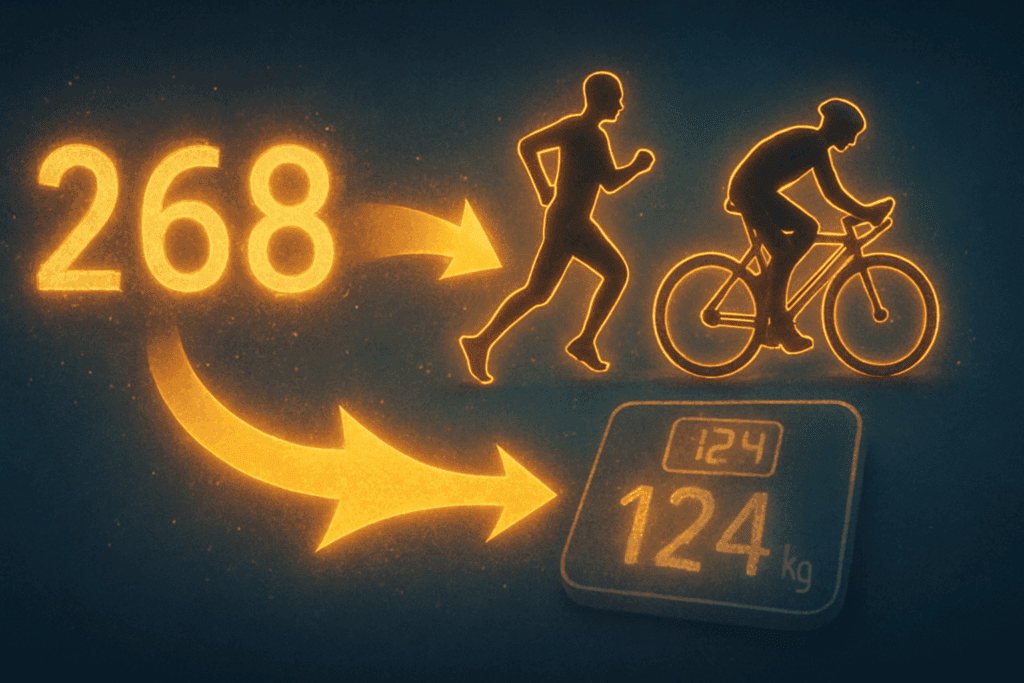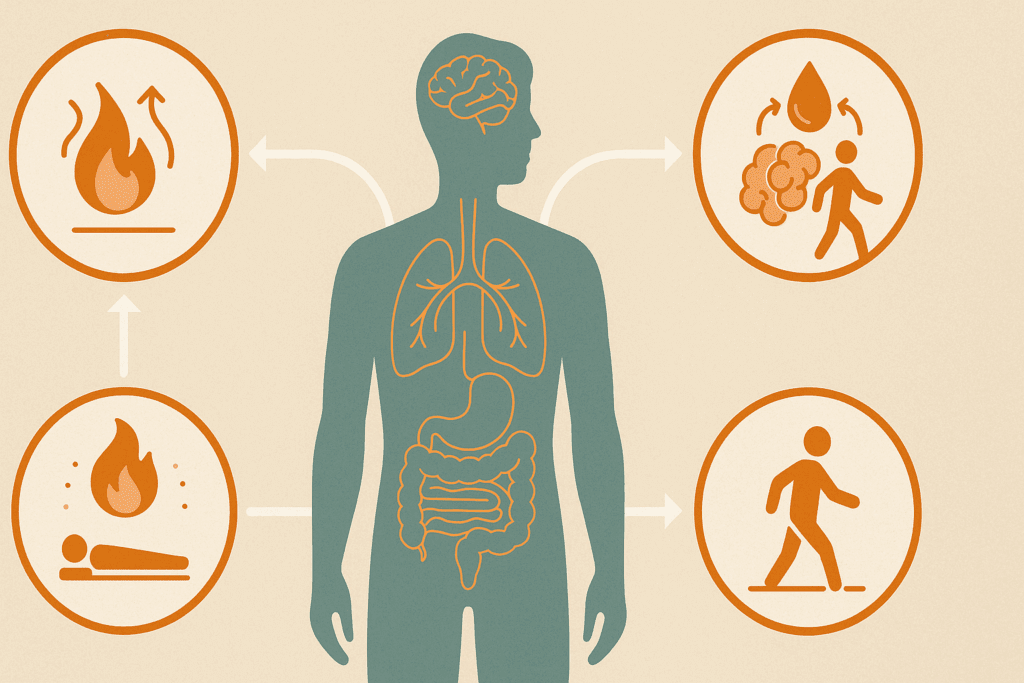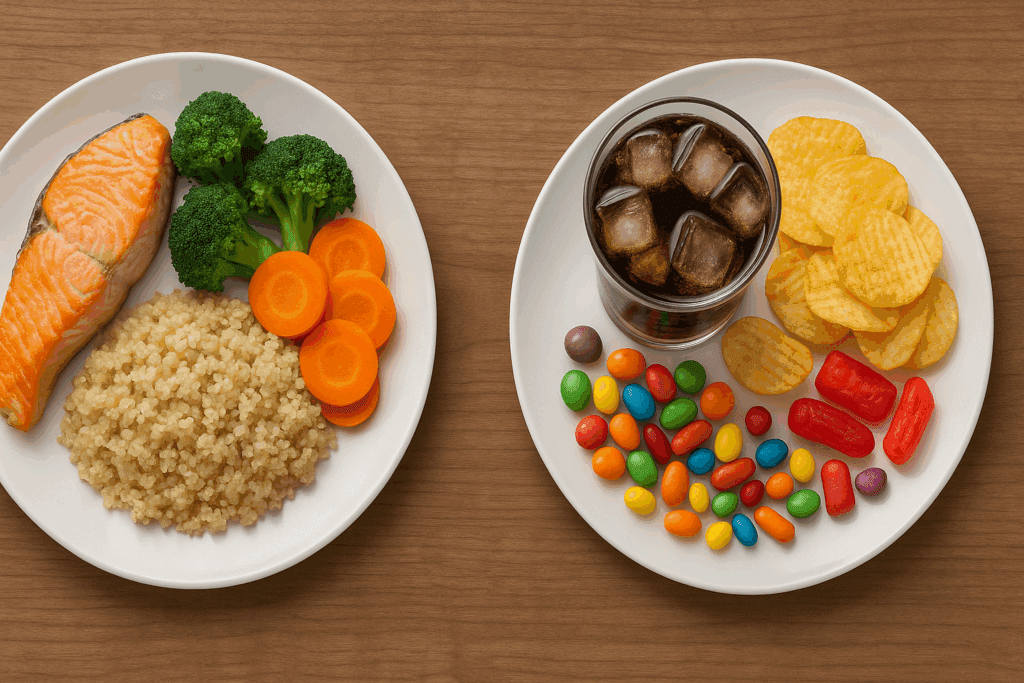When I first saw the phrase “I lost 268 calories in 124 pounds,” I had to pause. It seemed like a riddle. As someone who has gone through the deeply personal journey of losing 124 pounds, I knew that losing calories is not a thing in itself—we burn them, we manage them, but we don’t lose them as we might lose a pound or a pair of shoes. And yet, that sentence began to make sense to me the more I thought about the process of weight loss, energy expenditure, and what daily calorie goals really mean in the context of sustainable health and wellness. This article isn’t just about my personal weight loss journey, but about breaking down what those numbers signify, how they relate to others—especially in unique demographics like a 75-year-old man consuming 815 calories a day—and what role metabolism, nutrition, and behavior play in the broader picture.
You may also like: Expert-Backed Weight Loss Tips for a Healthier Lifestyle: What You Need to Know for Long-Term Weight Control and Wellness

Understanding the Real Meaning Behind “I Lost 268 Calories in 124 Pounds”
To make sense of the phrase “I lost 268 calories in 124 pounds,” it’s important to interpret it as a metaphor or misunderstanding rather than a literal equation. In reality, weight loss is the result of creating a consistent caloric deficit over time—you don’t “lose calories” per se, you burn them, and when the total amount burned consistently exceeds intake, weight loss occurs. When I lost 124 pounds, I achieved this by maintaining a calorie deficit of around 500 to 800 calories per day over the course of a year and a half. If you multiply that out, it equates to a deficit of approximately 268,000 calories over that span. That’s likely the origin of the phrasing, though it lacks precision. What matters more than the numerical coincidence is the understanding that substantial weight loss like this is driven by sustained effort, consistency, and physiological adaptation.
The real takeaway here is to reframe how we think about calories. They’re not just numbers to subtract or burn; they are units of energy, the currency of biological life. Each movement, breath, and heartbeat is powered by calories. So when someone says “I lost 268 calories in 124 pounds,” what they’re often describing is a relationship between cumulative energy deficit and physical weight lost. That understanding allows us to use calorie tracking as a tool, not an obsession, and to translate it into practical strategies for long-term wellness.

The Science of Calories and Weight Loss Explained
At the core of weight management lies a fundamental equation: calories in versus calories out. But this seemingly simple balance is anything but simplistic. Our bodies are dynamic systems, adapting to changing inputs, stressors, and behaviors. During my journey, the phrase “I lost 268 calories in 124 pounds” became a symbolic shorthand for the massive shift in energy balance I maintained over time. To lose one pound of body fat, a person typically needs to achieve a deficit of approximately 3,500 calories. While not an absolute rule, it provides a rough framework.
If you do the math, losing 124 pounds theoretically involves burning about 434,000 more calories than consumed. That isn’t achieved in a week, or even a few months. It requires sustained changes in diet, exercise, metabolism, and often mindset. What helped me the most was understanding how daily choices contributed to cumulative results. A skipped sugary drink here, an extra 30-minute walk there—these actions compounded into profound physiological change. This is why understanding your body’s basal metabolic rate (BMR) is crucial. Your BMR represents the calories your body burns at rest to maintain vital functions, and it’s the cornerstone of determining how many calories you need to consume or burn to achieve your goals.

Why Your Daily Calorie Goals Matter More Than You Think
If someone asked you, “What is the significance of 815 calories a day for a 75-year-old man?” the answer isn’t just mathematical. It’s deeply medical and personal. Caloric needs vary significantly depending on age, activity level, medical conditions, and metabolic rate. For a 75-year-old man, consuming only 815 calories a day is generally considered extremely low and may indicate a medically supervised diet or unintentional undernourishment. At that age, calorie needs decline due to reduced muscle mass and lower activity levels, but the body still needs enough fuel to maintain cellular repair, immune function, and organ health.
In my own journey, I realized how important it was to personalize my calorie goals. As I lost weight, my energy requirements changed. I went from consuming around 2,500 calories a day to maintaining on just under 1,800. At each stage, reevaluating my needs based on weight, body composition, and physical output ensured I stayed on track without harming my health. For older adults like the hypothetical 75-year-old man, daily intake must also factor in nutrient density. It’s not just about calories—it’s about getting enough protein, fiber, vitamins, and minerals in a more limited caloric window.

Metabolic Adaptation and the Challenges of Sustained Weight Loss
One of the biggest challenges in weight loss that often goes unnoticed is the concept of metabolic adaptation. As the body sheds weight, it becomes more efficient, requiring fewer calories to perform the same activities. This can make continued weight loss more difficult over time. In my case, I experienced plateaus where the same calorie deficit that once yielded results no longer produced noticeable changes. This is a common experience and can be discouraging without an understanding of the biology behind it.
When people talk about how they lost 268 calories in 124 pounds, they might be referencing these incremental decreases in caloric needs as weight decreases. As fat stores shrink, your BMR also drops. What once was a comfortable 2,000-calorie maintenance level may dip to 1,600. This doesn’t mean something is wrong; it means your body is adjusting, doing exactly what it’s designed to do. Recognizing this pattern allowed me to adjust both my diet and expectations. I introduced strategic refeed days, recalibrated my macros, and diversified my exercise regimen to prevent my body from falling into metabolic complacency.

Calorie Counting vs. Nutritional Quality: A Balanced Perspective
While tracking calories played a significant role in helping me lose 124 pounds, it became clear that not all calories are created equal. There’s a world of difference between 100 calories from leafy greens and 100 calories from soda. As I refined my approach, I shifted from pure calorie counting to a more nuanced understanding of nutritional density. This helped me recognize that what I ate mattered just as much as how much I ate.
When we think about a person eating only 815 calories a day, especially someone older, the composition of those calories becomes critically important. At such a low intake, every bite needs to deliver maximum nutritional benefit. For younger individuals trying to lose weight, the same principle applies. Rather than obsessing over how to lose 268 calories or how losing 124 pounds correlates to a numerical deficit, the focus should shift toward optimizing the quality of the food consumed. High-protein diets, fiber-rich vegetables, and healthy fats helped me feel full, maintain muscle mass, and preserve energy levels even while in a caloric deficit.
Behavioral and Psychological Shifts That Made Weight Loss Sustainable
No discussion of sustainable weight loss is complete without acknowledging the mental and emotional changes required. At the beginning of my journey, I was focused solely on numbers. I was obsessed with every calorie lost or burned, trying to answer questions like “I lost 268 calories in 124 pounds—how many calories should I burn today?” But as time passed, I discovered that this mechanical approach led to burnout. What created lasting change was developing a healthier relationship with food, understanding hunger cues, and identifying emotional triggers that led to overeating.
I worked with a nutritionist who emphasized mindfulness and intuitive eating techniques. Instead of eating out of habit or emotion, I began to listen to my body’s actual needs. This shift in perspective allowed me to find balance—I could enjoy occasional indulgences without guilt because I had built a foundation of consistency. This kind of behavioral resilience is crucial, especially when metabolic shifts make further weight loss slower. Without a stable mental framework, those slowdowns can feel like failures rather than natural progressions.
What the Phrase “I Lost 268 Calories in 124 Pounds” Reveals About Misconceptions
There’s a widespread misconception that weight loss is simply about burning a few extra calories here and there. While it’s true that small choices add up, the notion that losing a set number of calories per day automatically translates to pounds lost is overly simplistic. The phrase “I lost 268 calories in 124 pounds” illustrates this misunderstanding. It compresses an intricate physiological and behavioral process into a number that lacks nuance.
This matters because oversimplification can lead people astray. Someone might think that by exercising off 268 calories a day, they’ll replicate the same success. But without context, such an approach is doomed to fail. Individual variability—in hormone levels, muscle mass, lifestyle, sleep patterns, and stress—plays a massive role in outcomes. When writing down how many calories you need to lose weight, the math must be accompanied by insight into your body’s unique responses. That’s what allows the numbers to become tools rather than limitations.

Applying Caloric Awareness Across Age Groups: Special Considerations for Seniors
Returning to the example of an 815-calorie-a-day diet for a 75-year-old man, we must be cautious. In clinical settings, such low-calorie diets may be prescribed for rapid weight loss under supervision, but they are not sustainable for long periods, especially for aging individuals with reduced physiological resilience. Older adults often struggle with appetite, absorption, and muscle loss (sarcopenia), making it essential that even reduced-calorie diets meet minimum nutritional thresholds.
I had the opportunity to support a relative in their 70s through a healthier eating plan. What became obvious was how much more attention needed to be paid to nutrient density, hydration, and physical activity tailored to mobility levels. For anyone concerned about weight in later life, calorie targets like 815 per day should prompt a consultation with a medical professional. That number might represent a temporary step in a broader plan, but it should never be a long-term solution without proper nutritional oversight.
Practical Lessons From a Journey of 124 Pounds Lost
Reflecting on what it took to lose 124 pounds, the lessons go far beyond numbers. Yes, tracking calories was part of it. Yes, phrases like “I lost 268 calories in 124 pounds” echoed through my journey as mental benchmarks. But the real transformations came from the cumulative effect of sustained effort, balanced eating, self-awareness, and adaptive thinking. It was never about a single magic number, meal, or workout—it was about thousands of micro-decisions made over time.
That’s why, when readers search for clarity around phrases like “i lost 268 calories in 124 pounds how many calories should I burn daily,” the answer isn’t fixed. It depends on who you are, where you’re starting from, and what your goals and challenges are. My advice: use the numbers as tools, not judgments. Learn from them, adapt with them, and let them inform, but not dictate, your path forward.
Frequently Asked Questions: How I Lost 268 Calories While Losing 124 Pounds
1. What does the phrase “I lost 268 calories in 124 pounds” actually mean?
This phrase can be confusing at first glance, as it seems to equate two very different units: calories and pounds. However, when someone says, “I lost 268 calories in 124 pounds,” it typically reflects a misunderstanding or simplification of a much larger energy deficit. In reality, losing 124 pounds requires an enormous cumulative calorie deficit—roughly 434,000 calories, not just 268. The phrase may be an attempt to condense or symbolize a broader journey of consistent energy balance over time. While the wording is imprecise, it opens the door to exploring how calorie tracking, energy expenditure, and body mass changes interact.
2. How do calorie deficits translate into real-world weight loss?
The science behind weight loss reveals that creating a consistent calorie deficit is the key driver. Each pound of body fat represents approximately 3,500 calories. So, when someone refers to a concept like “i lost 268 calories in 124 pounds,” it suggests an ongoing, long-term effort to burn more energy than consumed. However, this process is not linear; as weight decreases, so does the body’s calorie requirement. In real-world terms, this means your daily caloric needs evolve over time and must be recalibrated to match your current weight and metabolic rate.
3. Can a person really survive on 815 calories a day, especially if they are older?
For a 75-year-old man, 815 calories a day is typically far below the recommended daily intake, even with reduced metabolic needs due to age. While there may be short-term medical reasons for such a restrictive diet, such as supervised very-low-calorie diets (VLCDs) for obesity treatment, this is not sustainable without clinical oversight. The body needs essential nutrients, protein, and fiber to function properly, especially in older adults who may face muscle loss and nutrient malabsorption. If someone claims to eat “815 calories a day 75 year old man,” it’s essential to question whether that regimen includes adequate nutrition, medical supervision, and long-term viability.
4. How can older adults lose weight safely without extreme calorie restriction?
Instead of relying on rigid caloric targets like 815 calories a day for a 75-year-old man, older adults are better served by focusing on nutrient-dense, lower-calorie foods combined with gentle physical activity. Safe weight loss at that age prioritizes protein for muscle preservation, hydration, and manageable caloric reductions of 300–500 calories below maintenance levels. For those trying to emulate a dramatic result such as “i lost 268 calories in 124 pounds,” it’s important to remember that outcomes should be tailored to each person’s unique health status and mobility. Nutritionists often emphasize strength training for seniors to preserve lean mass, which helps maintain higher metabolic rates.
5. Why does the body require fewer calories as we lose weight?
As you lose weight, your body becomes more efficient and requires less energy to sustain itself. This phenomenon, known as metabolic adaptation, often explains why weight loss slows over time. While it’s tempting to ask, “i lost 268 calories in 124 pounds how many calories do I burn now?”, the answer is dynamic and depends on current weight, lean muscle mass, and activity level. As a result, someone who used to maintain their weight at 2,200 calories may only need 1,700 post-weight loss. This decline is natural but can be frustrating if not anticipated and managed with adjustments in diet and activity.
6. What strategies can help break through weight loss plateaus?
When progress stalls despite efforts, strategic changes can reignite fat loss. Incorporating strength training increases muscle mass, which raises basal metabolic rate (BMR). Cycling calories through intermittent fasting or refeed days may also stimulate metabolism. For someone tracking their results with phrases like “i lost 268 calories in 124 pounds,” it’s vital to reevaluate not just calorie intake but also sleep quality, stress levels, and dietary variety. Plateaus often signal the body adapting to a routine, so introducing new challenges or reducing dietary monotony can create new momentum.
7. Is focusing on calories burned during exercise enough to lose weight?
No, weight loss is not solely determined by exercise-related calorie burn. While activity plays a crucial role, total daily energy expenditure includes resting metabolic rate, the thermic effect of food, and non-exercise activity thermogenesis (NEAT). Burning 268 calories during a workout is a positive contribution, but focusing only on that number—such as “i lost 268 calories in 124 pounds” might suggest—can be misleading. Instead, a holistic strategy that includes proper nutrition, stress management, and sleep hygiene yields better, long-term results. It’s the cumulative behavior changes that make a difference, not just isolated calorie burns.
8. How should someone calculate their daily calorie needs during weight loss?
Rather than relying on static numbers, daily calorie needs should be calculated using an individual’s current weight, age, activity level, and goals. Tools like the Mifflin-St Jeor equation provide an evidence-based starting point. For example, asking “i lost 268 calories in 124 pounds how many calories should I eat now?” requires assessing the new BMR post-weight loss. Online calculators can help, but they must be paired with real-world feedback like hunger cues, energy levels, and changes in body composition. Recalculating every 10 to 15 pounds lost is a good practice to maintain progress.
9. Are there psychological risks with extreme calorie restriction, especially in seniors?
Absolutely. Chronic under-eating, such as maintaining 815 calories a day for a 75-year-old man, may lead to fatigue, irritability, cognitive decline, and disordered eating patterns. In older adults, these issues can be magnified due to existing health concerns. Weight loss should never come at the expense of mental and emotional well-being. Rather than focusing only on numerical outcomes like “i lost 268 calories in 124 pounds,” it’s vital to monitor emotional health throughout the process. Consulting with registered dietitians and psychologists can support a more balanced, safe approach.
10. What long-term habits help maintain weight loss after reaching your goal?
Long-term weight maintenance is often more difficult than the initial loss. Establishing sustainable eating patterns, maintaining regular physical activity, and weighing in weekly can provide accountability without promoting obsession. Psychological habits, such as journaling and mindful eating, reinforce the behaviors that led to success. Rather than clinging to a phrase like “i lost 268 calories in 124 pounds” as a static victory, successful individuals reframe their journey as an ongoing commitment to health. Maintaining weight also requires flexibility—acknowledging life changes, age-related shifts, and the need to periodically adapt your strategy.
Reframing the Calorie Conversation for Sustainable Wellness
Ultimately, the conversation about calories must be reframed. Rather than obsessing over burning 268 calories or hitting an arbitrary daily target, focus on long-term metabolic health, nutrient intake, and personal sustainability. Think of calorie goals as flexible guidelines, not hard limits. Consider your age, lifestyle, and physiological needs. Whether you are a 75-year-old man eating 815 calories a day due to medical reasons or someone trying to interpret “i lost 268 calories in 124 pounds how many calories is that per day,” the core truth remains: weight loss is a journey of understanding, consistency, and compassionate self-discipline.
By applying medically informed, evidence-based strategies rooted in EEAT principles, we can move beyond the confusion of misleading phrases and focus on what really matters—a healthier, more empowered relationship with food, energy, and the bodies we live in.
Further Reading:
What Is a Calorie Deficit, and How Much of One Is Healthy?


